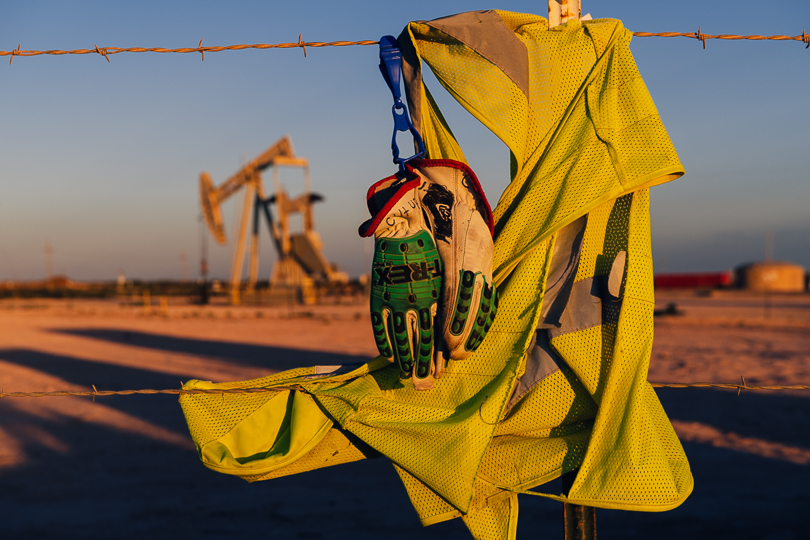For years, the oil and gas industry has been able to downplay, or outright ignore, the problem of methane. Methane is an invisible gas, and lax state and federal regulations in the U.S. have allowed oil and gas producers to self-report how much of this potent planet-warming gas leaks from its supply chain, which researchers have repeatedly found is a lot more than the industry was admitting to.
But improved technologies, particularly from satellites, have allowed the world to increasingly fact-check industry numbers, shining a light on the true climate impact of natural gas, which is primarily methane. These days, methane emissions have become an industry black eye, to the point that major players are now clamoring for regulations after the Trump administration recently finalized the rollback of Obama-era rules meant to reduce methane leaks from oil and gas.
On August 24, the Houston Chronicle published an op-ed arguing for the United States to regulate methane emissions for the oil and gas industry, and it was co-written by two influential voices in the industry, Antoine Halff and Andrew Gould. Halff was formerly the head of oil analysis at the International Energy Agency, an independent, intergovernmental organization focused on energy research and policy — and notorious for its overly optimistic (and inaccurate) outlooks for fossil fuels and overly pessimistic views on renewables. Gould is the former CEO of Schlumberger, the world’s largest oilfield services company. Gould also currently serves on the board of Occidental Petroleum Corporation — one of the largest fracking companies among the Permian oilfields of Texas.
Halff and Gould were writing in response to the Trump administration’s repeal of existing methane regulations. However, as a sign of the changing times, they argued that regulating the greenhouse gas is simply good business for the oil and gas industry.
“Producers will find it increasingly difficult to stay in business while visibly spewing methane into the air,” they wrote.
Major oil companies including Shell, BP, and ExxonMobil have spoken out against the repeal of the existing rule or even voiced support for new emissions rules.
“Shell has consistently urged the Trump Administration to directly regulate methane emissions from existing onshore oil and gas assets,” Shell U.S. President Gretchen Watkins said in a statement reported by The Hill. “The negative impacts of leaks and fugitive emissions have been widely acknowledged for years, so it’s frustrating and disappointing to see the Administration go in a different direction.”
In 2020, levels of methane – a major contributor to climate change – hit an all-time high. So naturally the Trump administration decided to decimate Obama-era methane regulations. There’s no limit to how far Trump will go for his Big Polluter pals. https://t.co/WYa3uZBme9
— LCV – League of Conservation Voters (@LCVoters) August 22, 2020
Despite the actions of the Trump adminstration, it appears the oil and gas industry has reached a turning point regarding the need to address methane emissions. Yet it still isn’t universal, as oil major Chevron continues to oppose methane regulations along with many smaller producers who argue the regulations are cost prohibitive.
The acknowledgement by many larger oil and gas producers that methane emisssions are causing an industry image problem appears to be directly linked to new satellite technology, which no longer allows the industry to hide the true scale of its methane emissions. Prior to this data from satellites and other new technologies, the industry’s self-reported methane emissions significantly under-estimated the real numbers, allowing the industry to downplay its impact on the climate. The industry didn’t start advocating to address the issue until new technologies both quantified just how big the problem was and identified its worst offenders. And one of the worst offenders in the world is the fracking industry in the Permian region of Texas and New Mexico.
As a result, U.S. oil and gas is becoming less appealing to customers and investors in the U.S. and around the world — and that has grabbed the U.S. industry’s attention.
On September 4, a group of institutional investors who manage more than $2 trillion wrote a letter to the Texas commission that regulates the oil and gas industry, calling for the state “to ban the routine burning of natural gas from shale fields, arguing that the energy industry hasn’t moved quickly enough to curb the controversial practice,” reports Bloomberg. The letter specifically cites the failure of voluntary efforts to address the issue: “It is clear, however, that voluntary actions alone have been insufficient to eliminate routine flaring industry-wide.”
On September 12, The New York Times revealed that oil and gas industry leaders, at an industry event in June 2019, privately acknowledged the scale of their methane flaring problem. Ron Ness, president of the North Dakota Petroleum Council, acknowledged, “We’re just flaring a tremendous amount of gas,” and, according to The Times, this practice “represented a ‘huge, huge threat’ to the industry’s efforts to portray natural gas as a cleaner and more climate-friendly energy source, he said, and that was damaging the industry’s image, particularly among younger generations.”
I know it’s hard to believe, but new secret recordings show gas and oil execs have been lying about their supposed efforts to control methane emissions.https://t.co/RA6mf6wmVh
— Bill McKibben (@billmckibben) September 12, 2020
The Difference a Few Years and Real Data Makes
In 2014 and 2015, the U.S. oil industry was lobbying hard for Congress to lift the 40-year ban on exporting crude oil and natural gas, and its proponents were even helping sell the idea on its supposed environmental merits. Politicians, former government officials, and consulting agencies were claiming at the time that the large increase in fracking for oil in the U.S., which would result from lifting the export ban, did not represent an environmental or climate concern, and might even be an environmental boon.
The mainstream media often printed these statements unchallenged. In December 2015, on the eve of the export ban’s reversal, The New York Times quoted Senator Bill Cassidy (R-LA): “Both on an economic and national security, and I might add, environmental basis,” Mr. Cassidy said, “there’s such a strong case for allowing U.S. export of oil.” The Times neither offered supporting evidence for nor questioned the validity of the senator’s claim.
More than a year earlier, former Secretary of the Treasury Larry Summers argued before an audience convened at the Brookings Institution in support of lifting the export ban on a number of grounds, one of which was environmental. He even acknowledged natural gas’s methane leaks issue. Summers said exporting U.S. natural gas would be good for the climate because it would replace dirty coal — but he based that part of his argument on a major and flawed assumption.
“[A]ssuming that the production of natural gas is regulated, so that there aren’t excessive leaks of methane associated with its production, will reduce emissions in the near-to medium-term,” Summers said in September 2014.
Assuming natural gas emissions would be properly regulated in 2014 was wishful thinking at best. In 2020, the federal government has no regulations at all for limiting methane leaks in the industry.
Perhaps the most extreme example at the time came in December 2015, when Dr. W. David Montgomery of NERA Economic Consulting testified to Congress that “the activity of producing oil itself is not going to increase greenhouse gas emissions.” Even before new satellite data illuminated the scale of methane emissions, this statement was blatantly false. At the time, sources ranging from the Department of Energy to the World Resources Institute were documenting the methane emissions created throughout the life cycle of oil and gas production.
NERA Economic Consulting boasts a long history of working for industry clients, including a report for the tobacco industry in the 1990s claiming there was no connection between tobacco advertising and smoking levels. President Trump cited negative economic statistics from a 2017 NERA report in his speech announcing that the United States intended to withdraw from the Paris climate accord. Ultimately, a NERA report was one of several that Congress used to justify lifting the crude oil and gas export ban at the end of 2015.
In 2020, however, the U.S. oil and gas industry is starting to grapple with its methane — and climate — problem, with some openly calling for its regulation.
Is methane clean? https://t.co/tcwQ2zmlBt
— Glyn Goodwin (@artglyn) August 20, 2020
According to data from the analytics firm Kayrros and cited by Halff and Gould, the methane emissions from the Permian region are likely the worst in the world, with levels three times those of Saudi Arabia. As the European Commission and other potential customers for oil and gas start considering the full climate footprint of fossil fuels, the U.S. industry’s methane problem puts its liquefied natural gas (LNG) exports, for example, at a disadvantage to other producers around the world.
Again according to Kayrros, the U.S. is “the biggest methane emitter of all oil and gas producers,” which is reason indeed for America’s oil and gas industry to be worried about its image.
Industry Spin
While Larry Summers and many others could make plausible arguments about the environmental benefits of natural gas compared to coal in 2014, that is no longer possible today, given the evidence to the contrary. But it was understandable that Summers was talking about the issue like that then because the industry has been working to sell natural gas as a “climate solution” since 2006 and a “bridge fuel” to a distant renewable-powered future since 1988.
In January, the American Petroleum Institute (API), the oil and gas industry’s largest lobbying group, launched an advertising campaign called “Energy for Progress,” which, as Reuters reports, sought to portray natural gas as a “clean” fuel.
But perhaps even API realized that description was a stretch. Apparently sometime in the past few months, the organization tweaked the language in some of its messaging, shifting the language from “clean” to “cleaner.”
A year earlier, when the Trump administration laid out plans to roll back the Obama-era methane leak rule, Erik Milito, a vice president at API, told The New York Times, “We think it’s a smarter way of targeting methane emissions.”
Smarter targeting of methane emissions by not regulating those emissions? In the past, this approach led to the industry underreporting its emissions levels, to the detriment of the climate. But it only worked until new satellites revealed just how much oil and gas companies have been underreporting the scope of the problem. In 2019, researchers showed that a natural gas well blow-out in Ohio in 2018 released more methane than the entire oil and gas industry of a country like Norway. But the world would have never known about one of the largest methane releases in U.S. history by relying solely on reports from the well’s owner, an ExxonMobil subsidiary.
Last year, API launched another ad campaign, claiming: “Thanks to natural gas, the U.S. is leading the way in reducing emissions.” A more accurate ad might say: Thanks to natural gas, the U.S. is leading the world in methane emissions.
Customers Walking Away
Satellite tracking represents an independent method for identifying and quantifying the oil and gas industry’s methane problem, which ranges from ongoing production leaks in active oil fields to a mysterious methane cloud in Florida potentially caused by a leaking gas power plant or pipeline.
Other technologies, such as airborne sensors, are also helping pull back the curtain on this invisible gas’s climate impact and the degree to which the fossil fuel industry has known about it but not acted until caught.
In August, NASA’s Jet Propulsion Laboratory identified a large methane leak coming from a Los Angeles-area natural gas power plant, according to Reuters. Apparently a power industry research group in March had notified the power plant about the leak, which has likely been around for years, but Reuters reports the utility doesn’t plan to address the leak until November.
This is insane! A gas power plant in LA has been leaking over 10,000 cubic feet of #methane per hour for the past *2 YEARS*.
That’s over 40,000 metric tonnes of CO2e every year until the leak is fixed – equivalent to adding 10,000 cars on the road. https://t.co/l7lkWCDi6M
— Arvind Ravikumar (@arvindpawan1) August 27, 2020
Throughout the oil and gas supply chain, from wellhead to power plant, methane is slipping out and into the atmosphere, where it warms the planet much more than carbon dioxide in the short term, at least.
These facts are catching up with the industry and some of its buyers are starting to scatter.
In late August, the CEO of major power utility Consolidated Edison (ConEd) announced the company no longer plans to invest in natural gas infrastructure and may sell its existing natural gas assets. Why? Because natural gas is not a good long-term option in the power generation business, ConEd Ceo John McAvoy said.
“We made those investments five to seven years ago, and at that time we — and frankly many others — viewed natural gas as having a fairly large role in the transition to the clean energy economy,” McAvoy said of previous natural gas investments, according to S&P Global. “That view has largely changed, and natural gas, while it can provide emissions reductions, is no longer … part of the longer-term view.”
This statement is remarkable at a time when U.S. natural gas production is at record levels, global natural gas markets are saturated, and gas is fetching record low prices. Cheap gas is plentful, but a major U.S. customer is still walking away. Today, the ConEd website doesn’t mention natural gas; instead, it touts the company as the seventh largest solar-power producer in the world.
Antoine Halff and Andrew Gould, the authors of the recent Houston Chronicle op-ed, asserted that the oil and gas industry needs to address methane emissions in order to remain competitive. “The bottom line is the United States needs better methane regulations to compete against other oil and gas producers,” they wrote.
The scope of the industry’s methane problem is now out in the open, and even without federal leadership, almost all of the major oil companies are now on board for regulating their methane emissions.
Global customers are reconsidering U.S. LNG because of its higher climate footprint compared to most of the rest of the world, and U.S. customers are starting to shift away from gas. These moves come at a time when the North American natural gas industry, and especially the LNG sector, is struggling financially and as fracking pioneer Chesapeake Energy, one of the largest U.S. natural gas producers, recently filed for bankruptcy.
But you won’t see any of that in an oil and gas ad campaign.
Main image: A laid-off oilfield worker’s vest and gloves hang on a fence post in front of an idled pump jack in Eddy County, New Mexico, this spring. Credit: Justin Hamel © 2020
Subscribe to our newsletter
Stay up to date with DeSmog news and alerts







